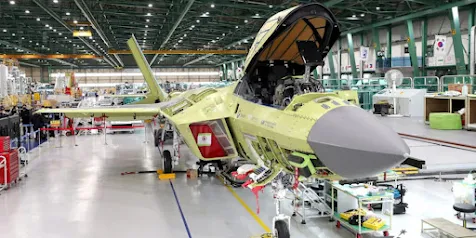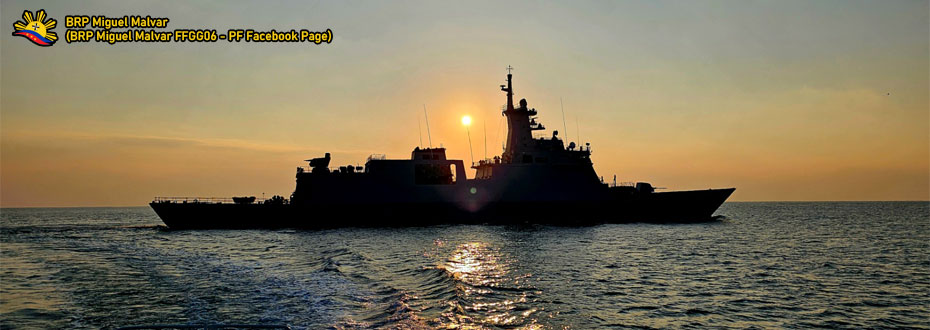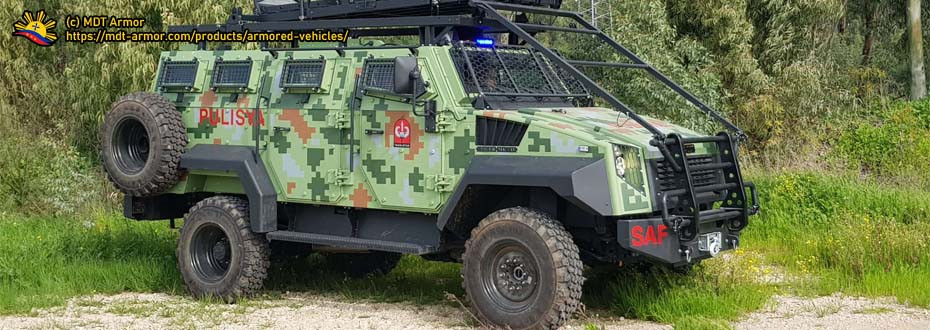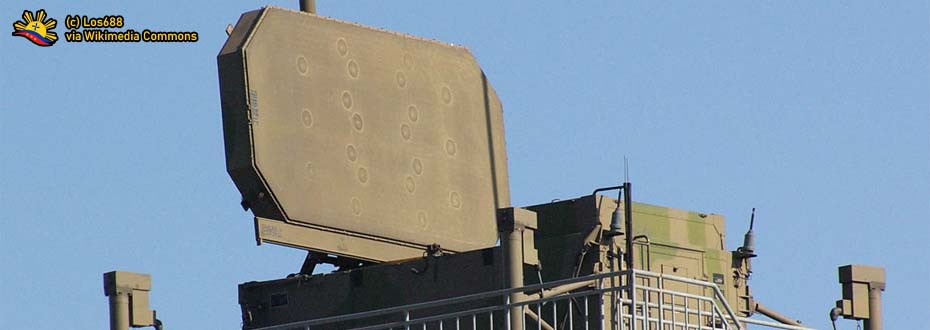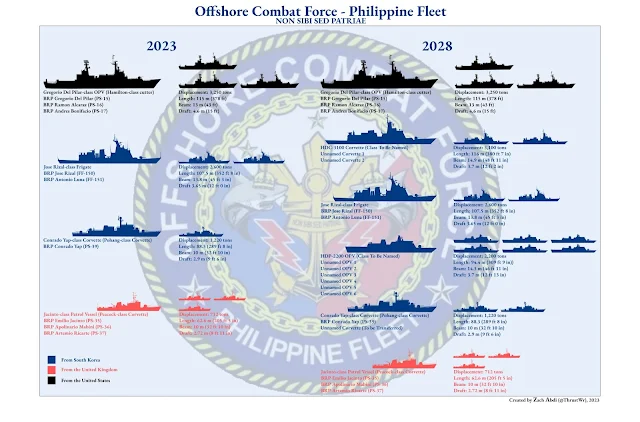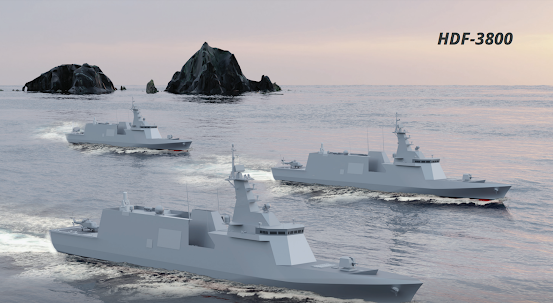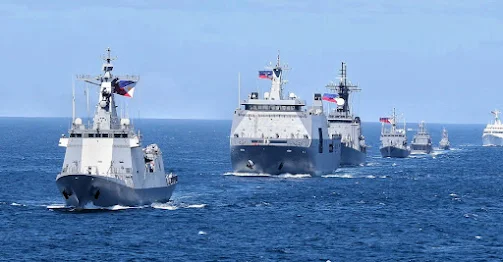- BRP Gregorio del Pilar (PS-15), known as the former cutter USCGC Hamilton WHEC-715;
- BRP Ramon Alcaraz (PS-16), known as the former cutter USCGC Dallas WHEC-716, and
- BRP Andres Bonifacio (PS-17), known as the former cutter USCGC Boutwell WHEC-719.
The first vessel, USCGC Hamilton WHEC-715, launched on December 18, 1965 by Avondale Shipyards in New Orleans, Louisiana, and then commissioned into active service within the United States Coast Guard on March 18, 1967. The ship served at least 44 years within the aforementioned agency until it got decommissioned on March 11, 2011, of which the vessel got sold to the Philippine Navy as the
BRP Gregorio del Pilar (PF-15). Take note that this was prior to the
reclassification of the three vessels into Offshore Patrol Vessels in 2019.
The second vessel,
USCGC Dallas WHEC-716, launched on October 1, 1966, still by Avondale Shipyards in New Orleans, Louisiana, and then commissioned into active service within the United States Coast Guard on October 26, 1967. The ship served for at least 45 years until it got decommissioned on March 30, 2012, wherein it got sold to the Philippine Navy as the
BRP Ramon Alcaraz (PF-16). Within a year since the BRP Gregorio del Pilar entered active service in the Philippine fleet, the Offshore Combat Force gained two former Hamilton-class cutters into its pool of ever-growing fleet of ships.
Finally, the third vessel of the class that entered the Philippine Navy fleet was the
USCGC Boutwell WHEC-719, launched on June 17, 1967, where it entered active service on June 24, 1968 in New Orleans, Louisiana. It served the United States Coast Guard for 48 years until in 2016, when it turned over to the Philippine Navy as part of a foreign military sale, a commitment made by then-President of the United States Barack Obama
when he visited the Philippines, together with the
oceanographic research vessel M/V Melville,
now BRP Gregorio Velasquez.
Now known as the
BRP Andres Bonifacio (PS-17), the Philippine Navy vessel took part in several international naval-related exhibitions and multilateral exercises, promoting and showcasing the ever-improving capability of this service branch of the Philippine military in sending its warships overseas for such events, a first since the fleet’s departure from operating World War 2-era vessels in littoral waters. One of those events is the
2017 Langkawi International Maritime and Aerospace Exhibition in Malaysia, and the other is the
2018 Rim of the Pacific or RIMPAC Exercise, together with BRP Davao del Sur (LD-602).
Overall, the Del Pilar-class Offshore Patrol Vessels, once designated as ocean-going patrol Frigates, served a stepping stone for the Philippine Navy’s desire to modernize its fleet of aging vessels, now getting a fair share of fully modernized and brand new naval vessels. Speaking of modernized naval vessels, the next classes of warships discussed deals with the Philippine Navy’s most sophisticated ones to-date, of which these vessels may only get superseded in capabilities by an improved variant of this naval vessel.
2. The Jose Rizal-class Frigates
 |
Two Jose Rizal-class Frigates moored alongside a Del Pilar-class Offshore Patrol Vessel.
Image Source. |
Being the most sophisticated naval vessels of the Philippine Navy as of current date, the Jose Rizal-class Frigates compose of these following units:
- BRP Jose Rizal (FF-150), of which it is the lead ship of its class, and
- BRP Antonio Luna (FF-151).
The first vessel is the
BRP Jose Rizal (FF-150), of which it currently serves as the flagship of the Philippine Navy’s ever-increasing and more-capable naval fleet. Its
designation as a flagship symbolizes the Philippine Navy’s ongoing modernization efforts within as part of the entire Armed Forces of the Philippines Modernization Program, as it is the first vessel that presents itself as the most capable and modern vessel to-date, paving the way to more capable ones like the HDC-3100 Corvettes.
On
May 23, 2019, Hyundai Heavy Industries launched the Philippine Navy’s first ever guided missile warship ever built, a significant milestone for the naval service branch as this was the time
the organization beefed up its anti-submarine, anti-air, and electronic warfare capabilities. This comes as the Philippine Navy sets to improve those capabilities further, as these concepts are relatively new to the organization and the entire Armed Forces are catching up to the weapons system-based concept of modern warfare.
BRP Antonio Luna (FF-151), a sister ship of BRP Jose Rizal,
launched on November 8, 2019 in the Hyundai Heavy Industries shipyard in Ulsan, South Korea. As it goes with the both vessels, the second guided missile warship of the Philippine Navy undertook several sea trials and tests prior to delivery to the Philippines and
eventually getting commissioned into active service on March 19, 2021. It took both the shipbuilder and the Philippine Navy a year and a half to take the ship into active service, as pandemic restrictions were in effect during that period.
During its span of service since getting commissioned up to the present day at the time this article gets published, the BRP Antonio Luna (FF-151) took part in several multilateral exercises, especially with the 2022 Rim of the Pacific or RIMPAC exercises as it bagged the third (3rd) place in the
Naval Surface Fire Support (NSFS) Rodeo, despite being the vessel and its crew’s first time to take part in this activity and was only months since its entry to active service.
Both of the vessels that form the Jose Rizal-class Frigates may have streamlined maintenance services later on, as Hyundai Heavy Industries sets to open its maintenance facility within
Subic Bay’s Agila Shipyard. This means that this may no longer require the vessels to get sent into the Hyundai Heavy Industries shipyard in South Korea for the required maintenance and retrofitting and instead having it done within the country, making it ready right away upon completion of its maintenance schedule.
Read more:
3. The BRP Conrado Yap and the Pohang-class Corvettes
The South Koreans didn’t stop from just providing brand new naval assets to the Philippine Navy, but also came to the point of providing the fleet with extra capabilities with gray-hulled ships that had once formed the bulk of the Republic of Korea Navy (ROKN).
- The BRP Conrado Yap (PS-39), and
- The future second Pohang-class known as ex-ROKS Andong, PCC-771.
The Pohang-class Corvettes were once the mainstay corvette fleet of the Republic of Korea Navy, whereby there are at least 24 warships built by various South Korean shipbuilding industries, spanning at least six (6) batches of the naval vessels with varying weapons load-out and capabilities, with most of these vessels have since exited active service and transferred to various navies, Philippines included.
Aside from the Philippine Navy, the other countries that are recipients of Pohang-class Corvettes coming from South Korea are the Colombian National Navy, Egyptian Navy, Peruvian Navy, and the Vietnam People’s Navy. Currently, Colombia received the ROKS Iksan (PCC-755) which is now the
ARC Almirante Tono, Egyptian Navy with the
ENS Shabab Misr or formerly ROKS Jinju (PCC-762) and the Peruvian Navy with both the
BAP Ferré or formerly ROKS Gyeongju (PCC-758) and
BAP Guise or formerly ROKS Suncheon (PCC-767).
Also, Vietnam received two Pohang-class Corvettes, with both Ships 18 and 20, formerly
ROKS Gimcheon (PCC-761) and
ROKS Yeosu (PCC-765), respectively. Overall, there are currently at least seven Pohang-class corvettes currently operational among foreign navies including the Philippines, plus one corvette subject to transfer to the Philippine Navy, now bringing it up to at least eight (8) Pohang-class transferred by the South Korean government.
The BRP Conrado Yap (PS-39) once served in the Republic of Korea Navy (ROKN) as the
ROKS Chungju (PCC-762), whereby it belonged to the Batch III variant of the Pohang-class Corvettes that comes with better antisubmarine capabilities as compared to the previous batch of the class, such as the
ROKS Mokpo (PCC-759) that the Philippine Navy once considered for this class of warship before ending up getting this vessel given that it is a younger hull and in better serviceable condition.
The other Pohang-class corvette that the Philippine Navy sets to receive is the former
ROKS Andong (PCC-771), a Batch IV corvette that is comes younger and more sophisticated than what is now BRP Conrado Yap (PS-39), as this batch comes with a better integrated system such as
Hanwha Systems’ Naval Shield during its service with the South Korean Navy.
From this point, these are the confirmations that the Philippine Navy may get at least two Pohang-class Corvettes from South Korea, although there are chances that the organization opts to
get more of the remaining Pohang-class vessels still serving the Republic of Korea Navy. This comes as expectations are still high that bilateral relations between both countries further improve on the defense aspect, with the likelihood of shipbuilders like HD Hyundai Heavy Industries securing contracts in the future.
Hence, it will be an interesting prospect for the Philippines securing more Pohang-class Corvettes, although it already comes with a boost that the Navy now comes with at least two (2) of such vessels that the naval service branch calls as the Conrado Yap-class Corvettes. These vessels are helpful for the country’s resolve to improve the number of its ever-capable naval vessels, with other South Korean-made newer vessels getting discussed throughout this article.
Read more:
4. Jacinto-class Patrol Vessels
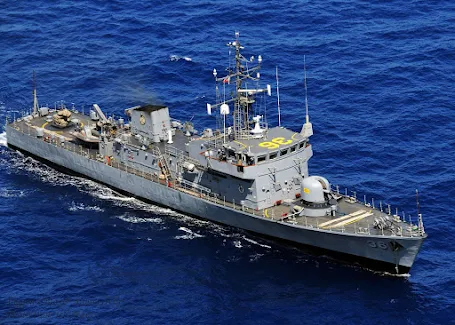 |
The BRP Apolinario Mabini (PS-36) as it took part in a sailing activity during Exercise Balikatan 2010.
Image (c) Wikimedia Commons. |
Next on the list are the vessels that were part of the British Royal Navy’s fleet of warships that served its overseas territories, especially with its former colony of Hong Kong, now special administrative region of the People’s Republic of China which is the same country that poses a threat in the country’s sovereign rights in the West Philippine Sea. This class of vessels comprises with the following ships, namely:
- BRP Emilio Jacinto (PS-35), formerly known as the HMS Peacock (P239),
- BRP Apolinario Mabini (PS-36), formerly known as the HMS Plover (P240), and
- BRP Artemio Ricarte (PS-37), formerly known as the HMS Starling (P241).
The Jacinto-class Patrol Vessels help introduce the Philippine Navy into the systems-based utilization of its weapons systems, specifically the 76mm Oto Melara main gun found onboard the vessel. The fleet composition of the Philippine Navy at the time these ships got integrated primarily came with World War 2-era minesweepers and destroyer escorts, with these Peacock-class vessels turned over came as one of the most sophisticated that the naval service branch ever possessed.
All the ships mentioned under this class once served to the British Royal Navy’s Hong Kong Squadron, produced in 1981 by Hall Russell Shipbuilding Company in Aberdeen, Scotland. Originally, the Peacock-class comprised five vessels, namely the Peacock (lead ship of the class), Plover, Starling, Swallow, and Swift. The first three vessels mentioned immediately turned over to the Philippine Navy after the 1997 turn-over of Hong Kong back to China, while the latter two - Shallow and Swift, turned over to the Irish Navy in 1988.
Throughout its serviceable life, all three Jacinto-class Patrol Vessels undertook several stages of upgrades and overhauls, enabling it to further expand its serviceable life even further even to the point of surpassing those of its sister ships belonging to the Irish Naval Forces. One of those things involves the repair and overhaul of its
76mm Oto Melara Main gun, and the other involves the installation of SAAB’s
9LV Combat Management System onboard the BRP Emilio Jacinto (PS-35).
There were also original upgrade plans involved with the Peacock-class, whereby short-ranged missiles reminiscent of the SPIKE-ER weaponry found onboard the MPAC Mk. 3s were in the eyesights of the British Royal Navy planners when they looked for an upgrade for the patrol vessels regarding its firepower. While in consideration, concerns involving the upgrade’s effect on performance, especially when considering the load as compared to the speed and the vessel’s propulsion system.
Speaking of the patrol vessel’s performance, it has a speed of 25 knots, powered by
two (2) Crossley Pielstick Diesel Engines, with the capability of getting into the range of 2,500 nautical miles at the cruise speed of 17 knots. The Jacinto-class patrol vessel’s hull comes with a displacement of 652 tons, length of 62.2 meters, beam of 10 meters, and draught of 2.72 meters. This means that the vessel is capable of its own capabilities while being a small vessel compared to the larger peers like the ones aforementioned.
With the entry of newer vessels as we discuss here in the succeeding parts, it may only be a matter of time until the idea of having the Jacinto-class Patrol Vessels decommissioned from active service just like the ones belonging to the Irish Navy. But with the current shortage of naval vessels, and the age of every vessel belonging to this class being younger than the youngest Del Pilar-class Offshore Patrol Vessel serving the fleet, it is reassuring that these warships still have more years actively serving the Philippine Navy with its crew.
Moving on, let us discuss the upcoming ships of the Philippine Navy, primarily coming from South Korea’s HD Hyundai Heavy Industries.
5. HDC-3100 Corvettes
 |
This is how the future HDC-3100 Corvettes of the Philippine Navy look like.
(c) HD Hyundai Heavy Industries. |
The following class of naval vessels on the list comes as an improvement over the Jose Rizal-class Frigates, itself being an HDF-2600 design. Like the frigates aforementioned, the Corvette Acquisition Project of the Philippine Navy also comes with a pair of vessels belonging to this type.
- HDC-3100 (01), and
- HDC-3100 (02).
With complete subsystems onboard aside from the Towed Array Sonar or TASS, of which it may come separately (FFBNW), the
HDC-3100 Corvettes comes as the most sophisticated naval vessel that the Philippine Navy will get once it entered active service, even surpassing the capabilities of the Jose Rizal-class Frigates that these improved variants derived from. This may also set a precedent for the Philippine Navy to secure equally capable or more capable naval vessels for its fleet under the Horizon 3 Phase 1 period.
Speaking of subsystems, the HDC-3100 Corvettes may have at least a 16-cell Vertical Launch System or VLS of whichever system installed onboard that defines its capability as either a Frigate or a Corvette, a 4x2 or eight (8) SSM-700K C-Star anti-ship missile system on the naval vessel’s midsection, a dedicated CIWS or Close-in Weapons System that may
likely be the ASELSAN Gokdeniz 35mm double-barreled CIWS gun (by Turkish company ASELSAN).
Another thing to point out is the stealthier design which is an improvement over the Jose Rizal-class Frigates, whereby it now comes with a design that covers the naval vessel’s midship portion, in the area where the anti-ship missiles, the rigid-hulled inflated boats (RHIBs), and torpedo launchers are situated. The design also increases the overall hull size of the naval vessels, making it at par to the Del Pilar-class Offshore Patrol Vessels, which is at around 115 meters long.
As an improved variant of the HDF-2600 (Jose Rizal-class) Frigates, the HDC-3100 Corvettes come with a tonnage of at least 3,100 tons (as described with its project name’s numerical designation), of which the Department of National Defense provided an allotted budget for the contract amounting to
Php 28,000,000,000.00 or at least Php 14,000,000,000.00 per vessel under this acquisition project. Also to take note is the fact that this design comes as an improvement over
South Korea’s Incheon-class Frigates (HDF-3000), also with a hull length of around 114 meters.
Also to take note is the fact that this design comes as an improvement over South Korea’s
Incheon-class Frigates (HDF-3000), also with a hull length of around 114 meters, as the HDC/HDF-3100 comes with a platform space intended for the Vertical Launching System or VLS installed onboard, a feature that is nonexistent to the former and rectified in the succeeding Frigate designs like the
HDF-3500 (Daegu-class) Frigates.
Speaking of the HDC-3100 Vertical Launching System, the space provided on the platform aside from the ones intended for the installed 16-cell system enables any future upgrade for the naval vessel’s capabilities that may render it as a AAW Frigate if given the proper VLS solution for the vessels such as the
Mark 41 Vertical Launching System, although this still depends on the Philippine Navy leadership’s discretion to pull such a move.
Upon the completion of the HDC-3100 delivery to the Philippine Navy, its entry will render it as the most capable surface naval vessels that the Offshore Combat Force possess upon the vessel’s entry to active service, surpassing the capability of the Jose Rizal-class Frigates, although the latter can catch up once the subsystems that fitted for, but not with or FFBNW may get purchased separately and eventually finding its way to these naval vessels.
Read more:
6. HDP-2200+ Offshore Patrol Vessels
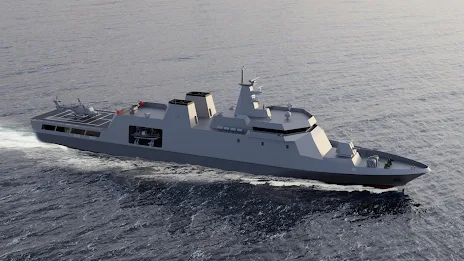 |
This is how the future HDC-3100 Corvettes of the Philippine Navy look like.
(c) HD Hyundai Heavy Industries |
Completing the list in this array of information is the HDP-2200+ Offshore Patrol Vessels which, like the HDC-3100 Corvettes and the HDF-2600 (Jose Rizal-class) Frigates, have also produced by the South Korean shipbuilder HD Hyundai Heavy Industries. Also, this acquisition project comes with the largest number of vessels that the Philippine Navy purchased to-date, as it currently implements the Revised AFP Modernization Program or R.A. 10349. The vessels that comprise this acquisition project are the following naval assets listed below.
- HDP-2200+ (01);
- HDP-2200+ (02);
- HDP-2200+ (03);
- HDP-2200+ (04);
- HDP-2200+ (05), and
- HDP-2200+ (06).
The project of six naval vessels of the Philippine Navy comprises the Offshore Patrol Vessel Acquisition Project, whereby it aims to provide an improvement in the naval service branch’s capabilities regarding the numbers fielded for patrol operations, aside from getting counted as a replacement to the older Philippine Navy vessels, most of which being old World War 2-era ones, that are already decommissioned out of service without immediate replacement.
The HDP-2200+ design is an improvement of the similarly developed
HDP-1500 Offshore Patrol Vessel design of the HD Hyundai Heavy Industries, whereby its stretched hull and space provides any allowable upgrades onboard the vessels upon the discretion of the Philippine Navy, aside from the subsystems already installed onboard such as
76mm Oto Melara Super Rapid Gun, secondary guns, and Rigid-Hulled Inflatable Boats or RHIBs for detailed functions that are in-line with the purpose of these vessels.
Initially named as HDP-2400 before the finalization, the HDP-2200+ Offshore Patrol Vessels of the Philippine Navy comes with the tonnage of at least 2,200 tons and with the dimensions of 94.4 meters long and 14.3 meters beam. The propulsion of these naval vessels comes with a Combined Diesel and Diesel combination that provides a top speed of 22 knots and a cruising speed of 15 knots, enabling it to travel at the maximum range of 5,500 nautical miles and has an endurance of 28 days at sea without refueling.
The size of the HDP-2200+ Offshore Patrol Vessels being a larger variant than the HDP-1500 design that HD Hyundai Heavy Industries presented for the Philippine Navy’s OPV Acquisition Project actually provides a space for any future upgrades that the end-user desires to use for the upgrade of its firepower capabilities. This means that the vessels still have a bit of an opportunity to be a far more potent vessel that also comes with the number of vessels that the naval service branch bought from the South Korean shipbuilder.
Aside from the 76mm Oto Melara main gun that has mentioned above, the secondary guns that may come with the Offshore Patrol Vessels may come with the
ASELSAN SMASH 30mm Secondary Gun System from Turkey’s ASELSAN, the same entity that may also provide the Philippine Navy with its
GOKDENIZ 35mm Close-In Weapons System or CIWS onboard the HDC-3100 Corvettes as competition to Navantia’s Rheinmetall Oerlikon Millennium 35mm Close-In Weapons System offer.
Like the other newer vessels of the Philippine Navy, the HDP-2200+ Offshore Patrol Vessels also came with a helicopter deck that accommodates any of the helicopters that the Philippine Navy have through the Naval Air Wing (NAW) such as the AW-109E Power helicopters and even the AW-159 Anti-Submarine Helicopters that the leadership has plans to get more later on to pair with future combat naval assets. Unlike the Frigates and Corvettes that the Philippine Navy gets, the HDP-2200+ OPVs do not have a hangar.
Overall, the acquisition of the HDP-2200+ Offshore Patrol Vessels by the Philippine Navy count as an overall capability improvement regarding the number of naval vessels ordered, as this further enhancing presence of the country’s key maritime assets in asserting the country’s sovereign rights in the West Philippine Sea, while jointly improving the country’s
maritime domain awareness with the counterparts within the Philippine Coast Guard in expanded maritime patrol operations within the country’s waters.
FUTURE HORIZON 3 PROJECTS AND LINEUPS
While the confirmed naval vessels for the Philippine Navy’s Offshore Combat Force under the
Revised AFP Modernization Program or R.A. 10349 have presented in a list provided above, this does not mean that any future naval acquisition project may happen, as the Horizon 3 phase of this program presents more plans and offers that the Navy leadership is aiming on. This comes as the government is gearing itself up to prepare the naval service branch for a new doctrine that specializes in external defense posture.
First in note is the future acquisition of combat naval vessels like the
Corvettes and Frigates. In the Philippine Navy’s measurement of parameters that sets the definition of a corvette and a frigate, the former comes primarily as an anti-submarine warfare platform, whereas the latter comes as an anti-air warfare platform. This means that there is a likelihood that the Jose Rizal-class Frigates may get re-categorized as Corvettes alongside HDC-3100 vessels later on, allowing the Philippine Navy to get larger vessels.
This means that, while these options are not final, the Philippine Navy seeks to have the likes of HD Hyundai Heavy Industries’
HDF-3800 Frigates or Damen’s
SIGMA 12516 Frigates as its parameters in seeking an anti-air frigate, although the parameters and discretions may change depending on factors that play on the decision-making such as the budgetary requirements and technical-based ones. Add to that the Department of National Defense’ desire to get the vessels produced in the country under SRDP.
Another thing to point out is the number of naval vessels that the Philippine Navy aims in acquiring for under the Horizon 3 phase of the AFP Modernization Program, whereby the final number of vessels still count as liquid given the shift to external defense as the Defense Department now sets to review the acquisition projects under the Revised AFP Modernization Program. Let us take note that a significant portion of acquisition projects under Horizon 2 are still yet in the process of implementation at the time this article gets published.
This also means that the Department of National Defense under the current leadership of Sec. Gilberto Teodoro is determined to get the best offers out of different shipbuilders who aspire to take part in the Horizon 3 naval vessel acquisition projects, as there is the likelihood of higher budget allotments, bulk orders, and most likely provisions for tech transfers and local shipbuilder partnerships taking place under the Self-Reliant Defense Posture or SRDP.
Just to take note, shipbuilders like South Korea’s HD Hyundai Heavy Industries
has the plans in setting up shop within the confines of the Agila Shipyard in Subic, whereby they may likely use the shipbuilding facilities that their compatriots in Hanjin Heavy Industries and Construction (HHIC) once used before its bankruptcy in 2019. The move paves a way for any potential in-house naval shipbuilding for the Philippine Navy requirements, aside from catering the repair and maintenance of both existing and upcoming naval vessels they produce.
Overall, the Offshore Combat Force’s naval composition isn’t final as the graph provided did not include any plans and programs that the Philippine Navy plans to get in the Horizon 3 phases, as this part of the Revised AFP Modernization Program presents itself with potentially larger budgetary requirements, bulk orders of naval vessels, and eventually getting warships that are far more capable than what the Philippine Navy sets to receive in the graph provided.
IN SUMMARY
The Philippine Navy’s
Offshore Combat Force currently possesses the most expensive and complex military hardware system across the entire Armed Forces of the Philippines as naval vessels came with integrated subcomponents designed to deter threats from naval vessels of potential adversaries, air threats, and underwater threats posed by submarines. And things will get added later on with the current work-in-progress acquisition projects and future Horizon 3 plans and programs.
From the provided graph, the Offshore Combat Force’s current composition comes with at least nine (9) naval vessels at the time this article has published, with at least nine (9) more upcoming naval vessels joining the fleet, spanning at least three projects, two of which referring the brand-new builds of HD Hyundai Heavy Industries of South Korea, with one being a grant from the South Korean government that serves as an additional vessel over the
BRP Conrado Yap (PS-39).
Currently, the most capable vessels that the Philippine Navy possesses to-date is the
Jose Rizal-class Frigates, whereby this pair of naval assets are an HDF-2600 design produced by HD Hyundai Heavy Industries. In the upcoming years within the timelines presented in the graph provided, this may get surpassed by the capabilities of the HDC-3100 Corvettes, which itself counts as an improved flight of the Jose Rizal-class Frigates and may enable the leadership to re-categorize naval vessel designations at their discretion.
The significant numerical gain that the Philippine Navy have for its fleet composition within the Offshore Combat Force unit is coming with the Offshore Patrol Vessel Acquisition Project, as the purchase of six (6) naval assets help improve the numbers needed by the naval service branch of the Armed Forces of the Philippines, especially with the recent decommissioning of older vessels (most of which are
World War 2-era warships) from the fleet without the immediate replacement in place.
However, the modernization efforts pushed by the Philippine Navy and the entire Armed Forces of the Philippines does not stop here, as the graph provided is incomplete and does not take into consideration the potential acquisition projects that may take place under all the phases provided under the Horizon 3 of the AFP Modernization Program. This is important, especially now that the current leadership within the Philippine government puts investments into the country’s external defense posture as a primary priority.
With the Horizon 3 plans and programs for the Philippine Navy and other branches of the Armed Forces of the Philippines now sets into motion, there is a likelihood that there will be more naval assets getting added into the list that the Offshore Combat Force and other units within the naval service branch in the upcoming years, as the current administration is hell-bent on achieving the objectives set in hand for the external defense posture as pushed as of current date.
Overall, the future is coming at a brighter pace for the Philippine Navy and the Offshore Combat Force in the succeeding years, as long as the current leadership within the national government and the Philippine Armed Forces keeps the momentum and constant support needed to achieve this ultimate purpose in terms of financial and material matters. All of which aims to get the country the best defense assets it deserves to get in the light of an ever-growing tension in the region and the current state of the world.

